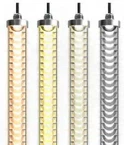A water reducer, also known as a water-reducing agent or plasticizer, is a widely used chemical additive in the production of concrete and cement-based products. Its primary function is to improve the flowability and workability of concrete without compromising its strength, thus reducing the cement content and achieving water-saving and efficient construction.
The main functions of a water reducer are as follows:
Reducing water-cement ratio: The water-cement ratio in concrete directly affects its strength and durability. A water reducer can decrease the required amount of water while maintaining concrete strength, resulting in a lower water-cement ratio and improved concrete strength and durability.
Enhancing concrete flowability: By altering surface tension and dispersing cement particles, the water reducer facilitates sliding between concrete particles, enhancing its flowability. This makes the concrete easier to work with, pour, and compact, reducing the formation of air voids and defects.
Improving concrete workability: The water reducer makes concrete more manageable and allows it to maintain workability for a longer period, thus enhancing construction efficiency and reducing concrete shrinkage and cracking.
Reducing concrete permeability: By optimizing particle dispersion and density, a water reducer can decrease concrete permeability, preventing the infiltration of water, salts, and harmful substances, thereby improving concrete durability and resistance to penetration.
It is essential to note that while water reducers offer numerous advantages for concrete, their usage must strictly follow the recommendations and guidelines provided by the manufacturer to ensure the desired concrete performance. Improper or excessive use of water reducers may lead to a decrease in concrete performance or other issues. Therefore, when using water reducers, it is crucial to adhere to the correct dosage and construction processes.







